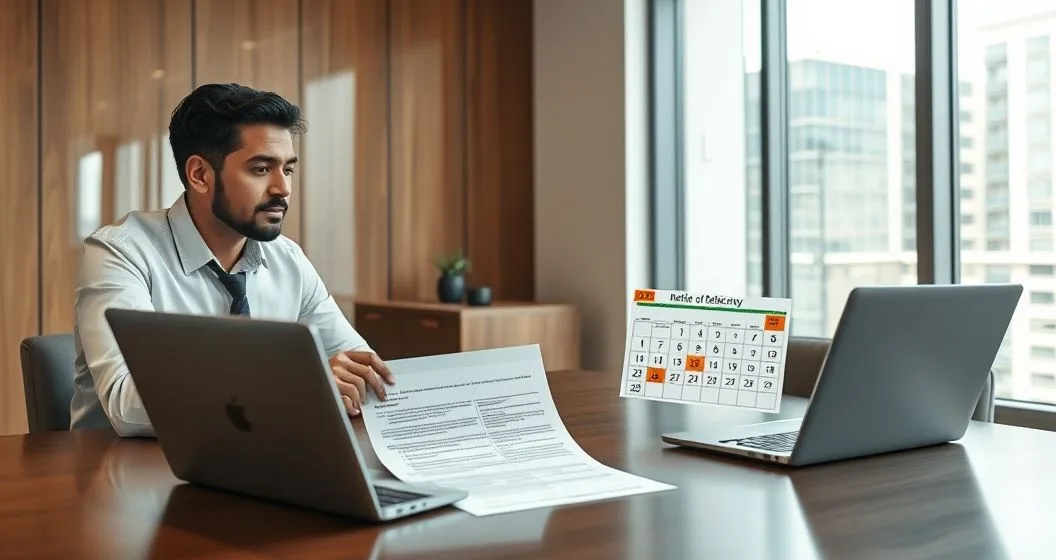Overview
A CP3219A is the IRS’s formal notice proposing changes that increase your tax liability. The notice lists the proposed adjustments, explains how the IRS calculated the change, and states your right to petition the U.S. Tax Court. If you want to stop the IRS from assessing and collecting the proposed deficiency, you must file a Tax Court petition within the time stated on the letter (usually 90 days; 150 if you live outside the U.S.) (see IRC §6213 and U.S. Tax Court guidance).
Key deadlines and immediate choices
- Deadline: File a petition with the U.S. Tax Court within 90 days of the date on the CP3219A (150 days if the notice was mailed to you outside the United States). Missing the deadline generally lets the IRS assess the tax and begin collection. (U.S. Tax Court, IRS guidance)
- Options on receipt:
- Pay the proposed amount and pursue refund/litigation later (may limit court options).
- Agree with the adjustments and close the case.
- File a petition in U.S. Tax Court to contest the deficiency—this preserves your right to litigate before assessment.
Why file a Tax Court petition?
Filing a timely petition prevents the IRS from assessing the proposed deficiency while your case is pending in Tax Court (Internal Revenue Code §6213). A Tax Court petition lets you: present evidence, request a trial, or negotiate a settlement. For smaller disputes you may be eligible for the Small Tax Case (Section 7463) procedure if the amount in controversy meets the court’s limits (see U.S. Tax Court rules).
Practical steps to prepare a petition
- Read the CP3219A carefully: note the tax years, amounts, and the date on the notice. The 90‑day clock starts on the notice date.
- Gather documentation: returns, W‑2s, 1099s, bank records, receipts, and any correspondence supporting your position.
- Consider representation: a CPA, enrolled agent, or tax attorney can draft and file the petition and represent you in court.
- File the petition: prepare the petition form per Tax Court requirements and file with the Clerk of the U.S. Tax Court by the deadline. Electronic and mail filing options are available—check the court site for current procedures.
- Service and follow‑up: serve the IRS as required, respond to discovery, and prepare for trial or settlement discussions.
Common consequences and misconceptions
- Filing a petition does not always stop interest and some penalties from accruing on the unpaid tax—interest generally continues to run until the liability is paid in full. Confirm specifics with your advisor.
- Ignoring the CP3219A typically leads to assessment, collection actions, and additional penalties.
- Agreeing to adjustments without documentation or advice can produce an avoidable tax bill.
When to consider alternatives to Tax Court
If you prefer to resolve the dispute administratively, you can request an IRS Appeals conference before filing (if Appeals is available) or negotiate directly with the IRS examiner. For guidance on choosing the right dispute path, see our guide: Tax Court vs. Appeals: Choosing the Right Path After an Audit (https://finhelp.io/glossary/tax-court-vs-appeals-choosing-the-right-path-after-an-audit/).
Helpful internal resources
- Tax Court basics and petition process: Tax Court Basics: Filing a Petition After a Notice of Deficiency — https://finhelp.io/glossary/tax-court-basics-filing-a-petition-after-a-notice-of-deficiency/
- Choosing appeals or Tax Court: Tax Court vs. Appeals: Choosing the Right Path After an Audit — https://finhelp.io/glossary/tax-court-vs-appeals-choosing-the-right-path-after-an-audit/
Authoritative sources
- IRS general notice information and CP3219A reference: IRS.gov (search “CP3219A Notice of Deficiency”) — https://www.irs.gov
- U.S. Tax Court — filing a petition and procedural rules: https://www.ustaxcourt.gov
- Internal Revenue Code §6213 (stay of assessment while petition pending)
Professional tips
- Start documenting immediately: create a case file for the tax year in question.
- If you file a petition, preserve originals and create organized copies; chronology matters in Tax Court.
- Consider settlement options early—many cases settle before trial.
Disclaimer
This article is educational and not legal or tax advice. For advice on your specific situation, consult a qualified tax attorney, CPA, or enrolled agent.



